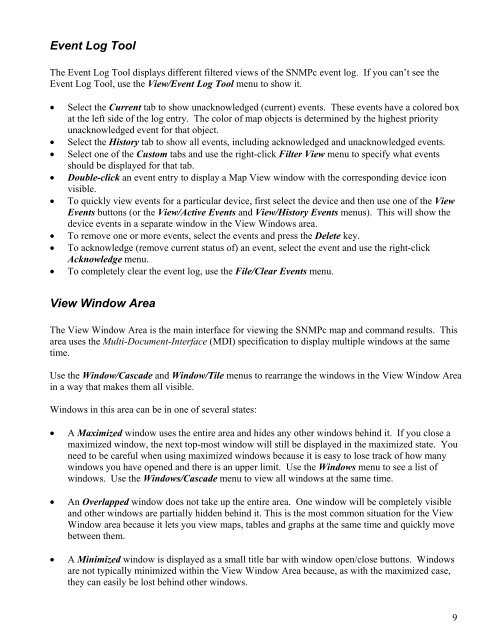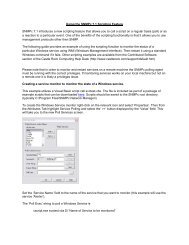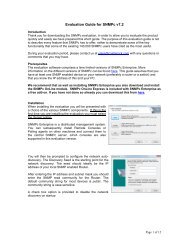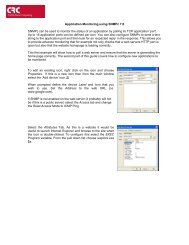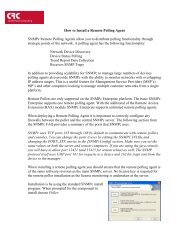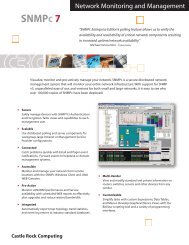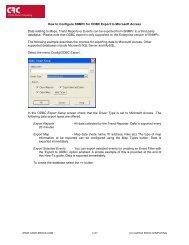Create successful ePaper yourself
Turn your PDF publications into a flip-book with our unique Google optimized e-Paper software.
Event Log ToolThe Event Log Tool displays different filtered views of the <strong>SNMPc</strong> event log. If you can’t see theEvent Log Tool, use the View/Event Log Tool menu to show it.• Select the Current tab to show unacknowledged (current) events. These events have a colored boxat the left side of the log entry. The color of map objects is determined by the highest priorityunacknowledged event for that object.• Select the History tab to show all events, including acknowledged and unacknowledged events.• Select one of the Custom tabs and use the right-click Filter View menu to specify what eventsshould be displayed for that tab.• Double-click an event entry to display a Map View window with the corresponding device iconvisible.• To quickly view events for a particular device, first select the device and then use one of the ViewEvents buttons (or the View/Active Events and View/History Events menus). This will show thedevice events in a separate window in the View Windows area.• To remove one or more events, select the events and press the Delete key.• To acknowledge (remove current status of) an event, select the event and use the right-clickAcknowledge menu.• To completely clear the event log, use the File/Clear Events menu.View Window AreaThe View Window Area is the main interface for viewing the <strong>SNMPc</strong> map and command results. Thisarea uses the Multi-Document-Interface (MDI) specification to display multiple windows at the sametime.Use the Window/Cascade and Window/Tile menus to rearrange the windows in the View Window Areain a way that makes them all visible.Windows in this area can be in one of several states:• A Maximized window uses the entire area and hides any other windows behind it. If you close amaximized window, the next top-most window will still be displayed in the maximized state. Youneed to be careful when using maximized windows because it is easy to lose track of how manywindows you have opened and there is an upper limit. Use the Windows menu to see a list ofwindows. Use the Windows/Cascade menu to view all windows at the same time.• An Overlapped window does not take up the entire area. One window will be completely visibleand other windows are partially hidden behind it. This is the most common situation for the ViewWindow area because it lets you view maps, tables and graphs at the same time and quickly movebetween them.• A Minimized window is displayed as a small title bar with window open/close buttons. Windowsare not typically minimized within the View Window Area because, as with the maximized case,they can easily be lost behind other windows.9


